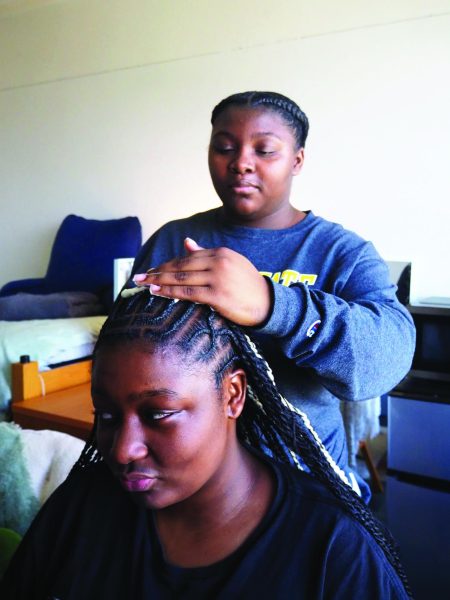Pilot math class created to benefit students
Math 196 builds foundation for next level courses
April 22, 2015
A change from curriculum accreditors, the Higher Learning Commission (HLC), left Wayne State College needing to make some changes in Genral Studies (GTS) courses earlier this semester.
Out of that obstacle, a math pilot program, or Math 196 was created.
The issue stemmed from the College’s open enrollment status and the credits offered to students who took (GST) classes.
“Open enrollment status is important to our students. It helps students who otherwise wouldn’t go to college,” Dr. Michael Anderson, vice president of Academic Affairs, said.
Open enrollment also means that some students won’t necessarily be at the same academic level as others.
“There are three areas with regularly unprepared students; math, reading and writing,” Anderson said. “If you need help with math or reading and writing, and you’re not ready, we’ve set you up for failure.”
But that doesn’t mean that those students can’t succeed, that’s what the GST classes are for. Classes like beginning algebra, speed reading and introducing college give students the opportunity to get the foundational knowledge they need to do well in their next level classes.
Until recently, students taking GST classes were able to receive up to five hours of credit. In January, the HLC decided that needed to change.
Now, students may receive three credits of non-degree bearing credit, meaning that those credits won’t go to a degree but will count for financial aid and full-time status purposes.
“We wanted to find a way to organize classes internally to solve the problem for degree bearing credit,” Anderson said.
Which is why the pilot math class, Math 196, was created.
“It took the objectives from Math 102, 103 and 105 and put them in a single course then removed the clock and the calendar,” Anderson said.
The class is designed to be self-paced. Students are in the class for a full year and work until they’re done.
Although it’s not an online course, it is all done on the computer. Students come to work on a program provided by Pearson Higher Education and are assisted by two instructors, Mary Kuchta and associate professor, Jennifer Langdon.
“There are 20 students; all on 20 computers. It’s like there are 20 individual classes when it’s all said and done,” Physical Sciences and Mathematics chair Dr. Tamara Worner, said.
“One faculty can be working to get a test going while one can be working with students on questions they’re having.”
While both Worner and Kuchta said there are still bugs to be worked out, both see their students benefiting in various ways.
“Students can gain quite a bit of confidence by working at their own pace. They get to take control of their own learning,” Kuchta said. “They’re learning how to study to be a self-learner. When you sit in a traditional classroom you can be passive. In this, they don’t have that opportunity.”
Students are also learning more than just math skills in the class.
“It’s an intense course for the faculty and students. It’s helping the students with, not only math, but how to work an intense course,” Worner said.
The students aren’t the only ones putting in time and effort into the pilot class either. After getting funding from the vice president’s office, and choosing Pearson as the company to work with, the math department put in considerable time to creating the class.
“We spent about 200 hours over the summer to get the program up and running and we had some students test it to see what bugs could pop up,” Worner said.
The decision to create this class as a way to deal with the HLC issues happened quickly.
“The math department is to be commended; they really stepped up to the plate,” Anderson said.








